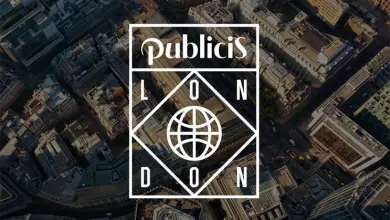Bluemarlin’s Andrew Eyles: how will brands survive the cost of living hunt for value?
Even before the latest hikes in inflation and the cost-of-living crisis, consumers had been growing more cynical about brands, the corporations that own them, and whether they are really worth any additional outlay. The recent economic downturn has exacerbated the problem. How will they survive?
According to insight and strategy consultant BritainThinks, 38% of shoppers say they have already started swapping their trusted brands for cheaper supermarket value products. Some 19% say they will ‘definitely’ move to cheaper brands as the year progresses, and a further 28% say they will consider it. Only 4% of consumers say they will ‘definitely not’ swap their staple brands for cheaper alternatives.


Those are worrying numbers, and they’re not helped by the widespread anxiety so many people are experiencing right now. The exponential rise in household living costs being felt across the globe has lots of contributing causes: the post-Covid effect on supply chains, general economic slowdown and inflation, and rising energy costs, a direct consequence of the war in Ukraine. Many consumers have no choice but to look harder at where they spend their money.
Separating brand from commodity
For many brand owners, the immediate response is to think ‘value, value, value.’ They’re facing their own sky-rocketing expenses, of course, so cost engineering seems like a strong first tactic – and we are already witnessing ‘shrinkflation.’ Bulk-buy value packs create unit cost savings, and supermarkets’ own labels and price rollbacks encourage consumers to think the giants are on their side.
For brands that don’t want to join the ‘race to the bottom’, they have to ask themselves, ‘What is worth paying more for?’ And they need to consider new ways to communicate the value of their brands to consumers.
That value lies in a brand’s meaning, which is the only thing that differentiates it from a basic commodity. Consumers always have, and always will, spend their hard-earned cash on the stuff that really means something to them.
Take the wellness sector. Consumer research company Attest revealed recently that 53% of UK consumers are willing to spend more on premium wellness products despite inflation – 3% ‘a lot more’ – and there’s a 10% projected growth in the wellness sector driven by natural ingredients.
Think of the teenager who saves for the designer garment that will gain them entrance to a tribe. Despite the cost-of-living crisis and household cutbacks, there are those brands that consumers simply won’t compromise on. They often have a nostalgic grip on us; they make us feel secure and as though everything will be all right.
Purpose with added verve
It’s a much-abused term that, these days, causes many of us to roll our eyes, but purpose won’t go away because belts are being tightened. On the contrary, it’s more critical because they’re being tightened. The ‘why’ we buy over the ‘what’ we buy has never been more important.
That’s because ‘why’ is about meaning; meaning is all about feeling and right now our feelings are seriously heightened. As sociologist Scott Schieman says, ‘There’s a feeling of uncertainty and loss. This dampens our feeling of satisfaction and undermines our emotional well-being.’
How we feel affects what we think, how we behave and what we choose. That post-workout buzz. That final to-do-list tick. That hygienist-clean zing. Brands have been all about feelings since the 1950s Mad Men era.
Brands need to deliver more
Consumers are looking for so much more from their chosen brands. They want them to take a stand on issues around sustainability, ethical sourcing, environmental impact and employment practices, including diversity and inclusion. More than 60% want to see the companies they’re drawn to take a stand. And according to social impact group BBMG, 81% of under 30s said they wanted companies to take a leading role in ‘confronting the challenges facing humanity.’
So now more than ever, when many people have less, brands need to connect emotionally. They need to mean more, and they need to do more, way beyond offering more bang for your buck.
Brands need to feel more accessible. For skincare brand The Ordinary that’s about democratising and demystifying the category and offering salicylic acid for a fiver. Brands need to be more thoughtful. For PVH, the global apparel company that owns Calvin Klein, that means committing to having packaging that is made of 100% sustainable and ethically sourced materials by 2025.


Brands need to be more resourceful. For Hellman’s mayonnaise that’s about encouraging us to be more creative with what we’ve got in the fridge. ‘Make taste, not waste.’ And brands need to be more relevant and tuned in. For Co-op’s Honest Value brand, that means responding to a consumer desire for ethical and sustainable products on a budget.
When people have less, the challenge for brands is working out how to give them more. More of what speaks to the heart over the head. More of what matters. It’s not always about putting a reduced-price sticker on it.











